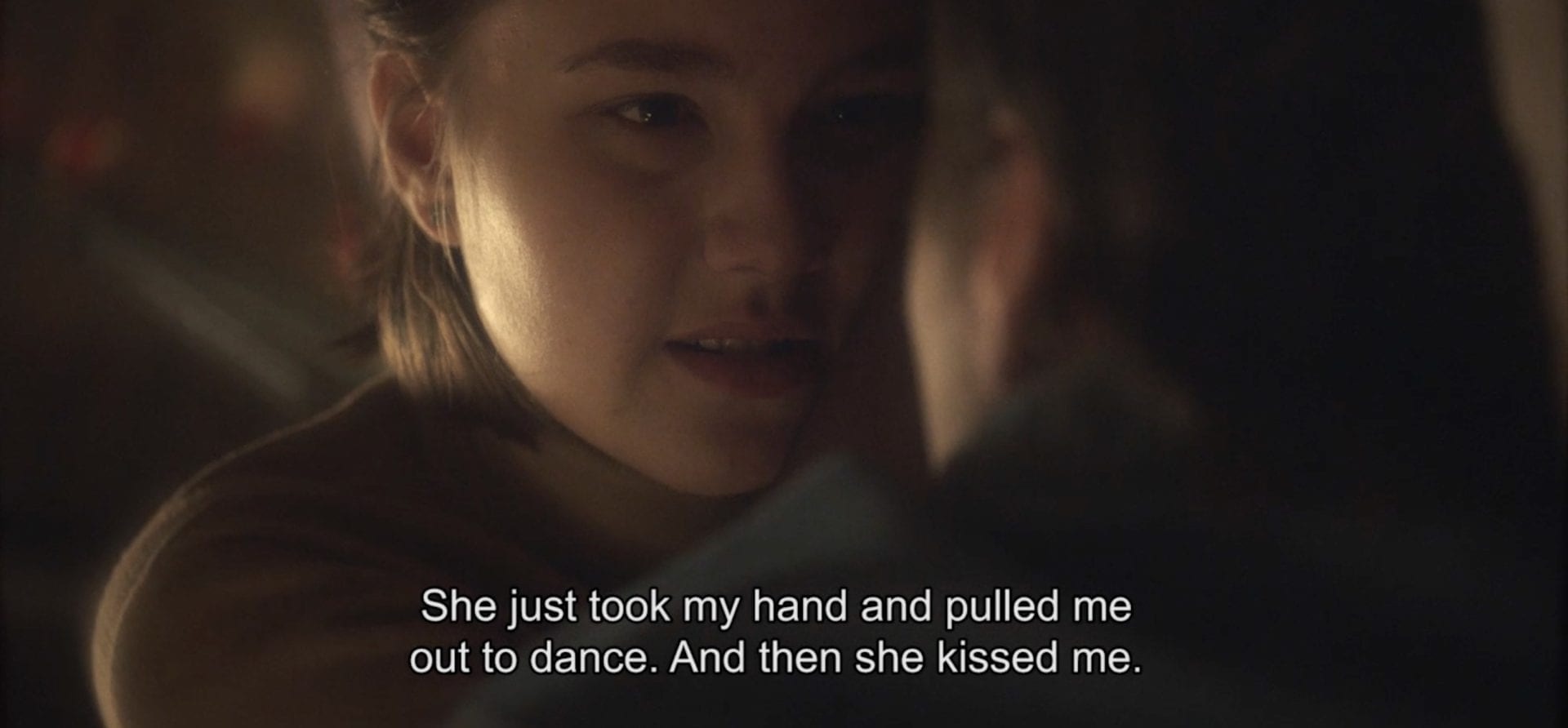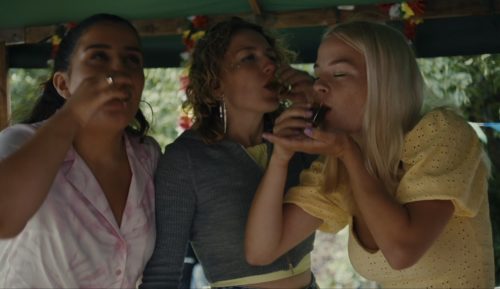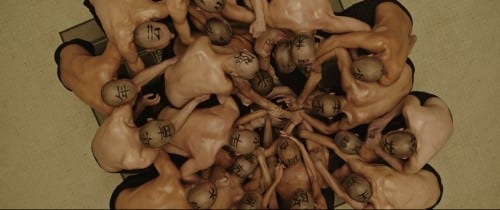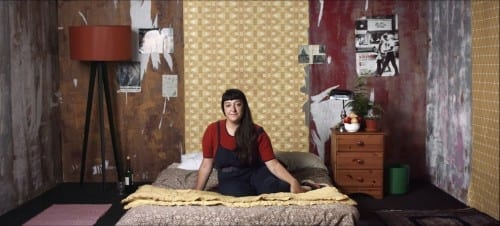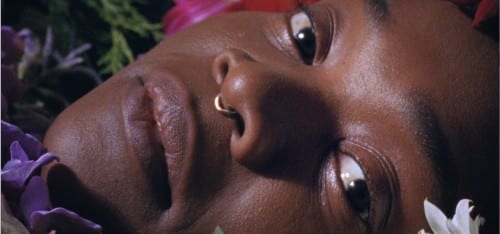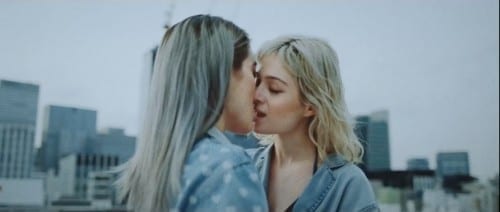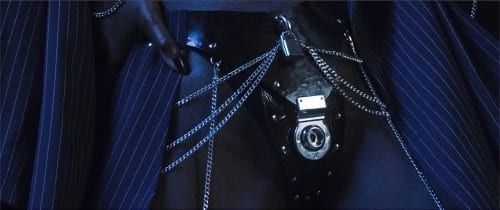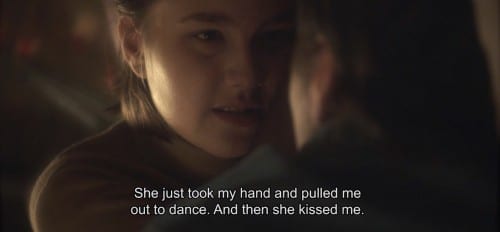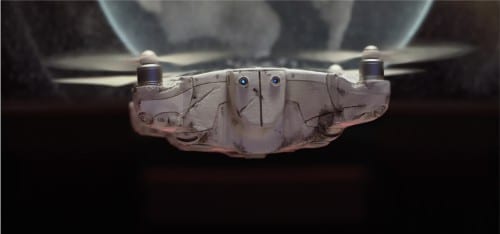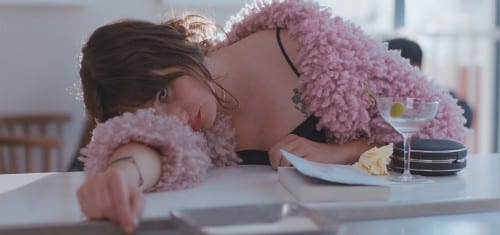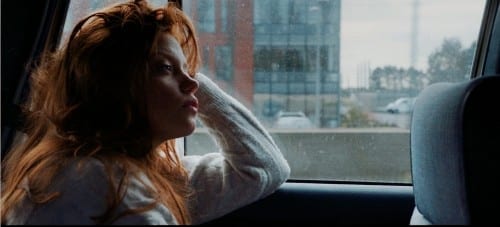This film feels very authentic on many levels! In fact it feels very autobiographical – is it?
Yes, the film is based on a personal experience. Not everything happened exactly as it’s portrayed in the film though. It was really important for me that the film felt as authentic and honest as possible, and I knew that I couldn’t do that without making the film with improvisation. So the actors put a lot of their own heart and soul into the film, which made it what it is. I owe them everything for this.
We see you wrote the narrative with Trille Cecilie Uldall-Spanner – how did that creative process work?
Trille Cecilie Uldall-Spanner is my ex girlfriend and we co-wrote the film. It was important for me to have her as part of the writing process, since it was based on a personal experience. I thought there was something beautiful and honest about breaking up like this, so I wanted to adapt the experience into a film. I knew at the time that I wanted to do it with improvisational acting, so we only wrote a rough draft to work as inspiration for the shoots. To be honest, it was really hard to write it together though, since we more or less had just broken up.
You’ve maintained an emotional complexity without being sentimental. What were the important points you wanted to convey?
The goal for me was to make a film about a neutral breakup, so it was very important to me that both characters seemed equally sympathetic throughout the film. While editing, it was very hard to reach this balance. It was down to absolute details before one of the characters seemed more sympathetic than the other. I also wanted to convey the exact feeling of being in a break up based on my own experiences. In all the breakups I’ve been in, I’ve always had the experience of thinking about all the good times, when I’m in the situation of breaking up with a person – even though it’s actually not any good anymore. I really wanted to capture this feeling with the flashbacks in the film.
Did you storyboard in detail or simply draw up a shots list?
The director of photography, Christian Houge Laursen, and I did a shot list together, but a lot of it was scratched while we were shooting. We really wanted to capture something real and create a space with as few boundaries as possible for the actors. To do this, we almost shot the whole film with natural light and a lot of practical lights. So the big challenge for the DOP was to stay on his toes and follow the actors while still making beautiful pictures. Christian has a great sensibility and did such a great job shooting the film.
How did you cast the characters? And what was the process for achieving the feeling of real intimacy between them – did you have rehearsals and evolve the script at the same time? Did they know each other?
For a long time, I wanted to work with Ferdinand Falsen Hiis and felt that he would be perfect for the part as William. To find the actress to play the part of the character Cecilie, I did chemistry casting with Ferdinand. The casting more or less consisted of Ferdinand and I meeting with different actresses at a bar on different nights and just talked and having fun.
Then from time to time I would just step out of the conversation and just get a feel of their chemistry. I tried to find a fit, where I could feel both chemistry and friction between the two actors. It should be believable that they would end up breaking up at some point. That might sound harsh, but that was the intuitive feeling I was looking for. We ended up casting Frederikke Dahl Hansen, because I felt the energy was perfect. Besides that, I already knew that she was a great talent.
Was the shoot straight forward?
We started out shooting all scenes in the apartment in the fall and we did it chronologically, which helped a lot since we were working with improve. Then I spent some months editing that part of the film to figure out what flashbacks we needed. After that I waited a couple of months for the spring to come, because I wanted a feel of two different seasons to show the contrast of what once was and what is.
What were the main challenges of the whole production?
The biggest challenge of the whole production was that we didn’t really have a shooting plan, which made it very difficult for the art department to move around on set. The full crew were in the apartment, so we had to move everything around every time we were changing from one location to the other – and we didn’t really know when we had to move before the last minute. So just as fantastic it is to work with improve it also made it harder for some departments.
You edited the film as well – did you have to do many pick-ups afterwards? Did the film change much in the edit?
We actually didn’t do any pickups at all. The sound designer and I decided in post production that it would be too difficult to make the pickups sound as natural as what was recorded on set. So even though some of the sound was a bit bad because of the improve, we decided to keep it as it was and instead clean it as much as possible.
I feel like the film more or less ended up being just as I wanted it to be from the beginning. Of course some things changed – we cut out a few scenes – but the feeling I was going for completely came through. Maybe even more than I dared hope for.
You’ve picked up quite a few festival accolades for Forever Now and deservedly so – including SXSW Jury Award for Best Narrative. Is another short film on the cards soon?
Yes, the festival run has been very overwhelming. I’m very happy about it. I’m actually just about to finish two new film projects. The first one is a live action short film about the depressed baker, ERIK, who can’t connect with his family, even though he desperately tries to connect with them through jokes. This is a school film from the prestigious film school SUPER16, which I’m studying at in Copenhagen, Denmark.
The other one is a TV pilot for an animation comedy show called SIMON & MARIUS. The pilot is about a high school kid, Simon, and his pigmy giraffe, Marius, which goes on an adventure to figure out if Simon has been catfished by his new internet girlfriend, Julie. The pilot is almost done, so next we’ll try to get a broadcaster onboard for a full season.
Is there anything else you’d like to share?
I would like to say that this film would never have been what it is without such an amazing team. I would like to specifically mention the sound designer, Christian Scheuer and the composer, Jesper Ankarfeldt, who both did an amazing job conceptualizing and creating the sound and music of the film. I don’t know what I would have done without them.
